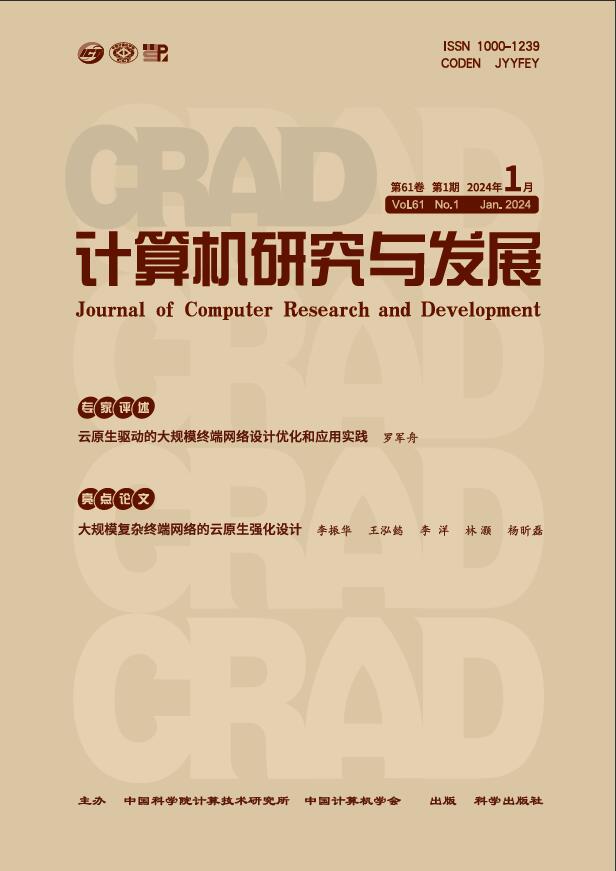求助PDF
{"title":"新冠肺炎相关社交媒体谣言传播的定量分析","authors":"H. Chen, S. Jin, W. Lin, Z. Zhu, L. Tong, Y. Liu, Y. Ye, W. Jiang, Z. Liu, M. Sun, J. Jin","doi":"10.7544/issn1000-1239.2021.20200818","DOIUrl":null,"url":null,"abstract":"The outbreak of the COVID -19 pandemic is accompanied by numerous rumors spreading on the social media platform, which seriously affects the stability of society and the safety of public. Existing quantitative analyses of COVID -19 related social media rumors only focus on single element of communication, such as content, while ignoring other basic elements of communication, including communicator, audience, and effect. Besides, compared with the real social media rumor data, the rumor data of these studies have distribution bias and lack of information. Therefore, we conduct a more comprehensive quantitative analysis on the communication of COVID -19 related social media rumors based on the Sina Weibo platform. Specifically, we first analyze the communication content of rumors, including the analysis of the topic, involved regions, event tendency and sentiment. Further, we investigate the users engaged in rumor communication and divide the users into three categories, namely, rumor posters, rumor spreaders, and rumor informers. We explore the basic attributes, topic preferences, individual sentiments, and self-network characteristics of the engaged users. Finally, we study the public opinion triggered by rumors, including the overall sentiment distribution, its correlation with topics, keywords and regions, as well as the evolution of sentiment. To conclude, this study first quantitatively analyzes COVID -19 related social media rumors from the perspective of different basic elements in communication. It provides a more comprehensive and profound understanding of COVID -19 related social media rumors and is of great value for both research and management of rumor in public emergencies. © 2021, Science Press. All right reserved.","PeriodicalId":35747,"journal":{"name":"计算机研究与发展","volume":"58 1","pages":"1366-1384"},"PeriodicalIF":0.0000,"publicationDate":"2021-07-01","publicationTypes":"Journal Article","fieldsOfStudy":null,"isOpenAccess":false,"openAccessPdf":"","citationCount":"2","resultStr":"{\"title\":\"Quantitative Analysis on the Communication of COVID-19 Related Social Media Rumors\",\"authors\":\"H. Chen, S. Jin, W. Lin, Z. Zhu, L. Tong, Y. Liu, Y. Ye, W. Jiang, Z. Liu, M. Sun, J. Jin\",\"doi\":\"10.7544/issn1000-1239.2021.20200818\",\"DOIUrl\":null,\"url\":null,\"abstract\":\"The outbreak of the COVID -19 pandemic is accompanied by numerous rumors spreading on the social media platform, which seriously affects the stability of society and the safety of public. Existing quantitative analyses of COVID -19 related social media rumors only focus on single element of communication, such as content, while ignoring other basic elements of communication, including communicator, audience, and effect. Besides, compared with the real social media rumor data, the rumor data of these studies have distribution bias and lack of information. Therefore, we conduct a more comprehensive quantitative analysis on the communication of COVID -19 related social media rumors based on the Sina Weibo platform. Specifically, we first analyze the communication content of rumors, including the analysis of the topic, involved regions, event tendency and sentiment. Further, we investigate the users engaged in rumor communication and divide the users into three categories, namely, rumor posters, rumor spreaders, and rumor informers. We explore the basic attributes, topic preferences, individual sentiments, and self-network characteristics of the engaged users. Finally, we study the public opinion triggered by rumors, including the overall sentiment distribution, its correlation with topics, keywords and regions, as well as the evolution of sentiment. To conclude, this study first quantitatively analyzes COVID -19 related social media rumors from the perspective of different basic elements in communication. It provides a more comprehensive and profound understanding of COVID -19 related social media rumors and is of great value for both research and management of rumor in public emergencies. © 2021, Science Press. All right reserved.\",\"PeriodicalId\":35747,\"journal\":{\"name\":\"计算机研究与发展\",\"volume\":\"58 1\",\"pages\":\"1366-1384\"},\"PeriodicalIF\":0.0000,\"publicationDate\":\"2021-07-01\",\"publicationTypes\":\"Journal Article\",\"fieldsOfStudy\":null,\"isOpenAccess\":false,\"openAccessPdf\":\"\",\"citationCount\":\"2\",\"resultStr\":null,\"platform\":\"Semanticscholar\",\"paperid\":null,\"PeriodicalName\":\"计算机研究与发展\",\"FirstCategoryId\":\"1093\",\"ListUrlMain\":\"https://doi.org/10.7544/issn1000-1239.2021.20200818\",\"RegionNum\":0,\"RegionCategory\":null,\"ArticlePicture\":[],\"TitleCN\":null,\"AbstractTextCN\":null,\"PMCID\":null,\"EPubDate\":\"\",\"PubModel\":\"\",\"JCR\":\"Q3\",\"JCRName\":\"Computer Science\",\"Score\":null,\"Total\":0}","platform":"Semanticscholar","paperid":null,"PeriodicalName":"计算机研究与发展","FirstCategoryId":"1093","ListUrlMain":"https://doi.org/10.7544/issn1000-1239.2021.20200818","RegionNum":0,"RegionCategory":null,"ArticlePicture":[],"TitleCN":null,"AbstractTextCN":null,"PMCID":null,"EPubDate":"","PubModel":"","JCR":"Q3","JCRName":"Computer Science","Score":null,"Total":0}
引用次数: 2
引用
批量引用
Quantitative Analysis on the Communication of COVID-19 Related Social Media Rumors
The outbreak of the COVID -19 pandemic is accompanied by numerous rumors spreading on the social media platform, which seriously affects the stability of society and the safety of public. Existing quantitative analyses of COVID -19 related social media rumors only focus on single element of communication, such as content, while ignoring other basic elements of communication, including communicator, audience, and effect. Besides, compared with the real social media rumor data, the rumor data of these studies have distribution bias and lack of information. Therefore, we conduct a more comprehensive quantitative analysis on the communication of COVID -19 related social media rumors based on the Sina Weibo platform. Specifically, we first analyze the communication content of rumors, including the analysis of the topic, involved regions, event tendency and sentiment. Further, we investigate the users engaged in rumor communication and divide the users into three categories, namely, rumor posters, rumor spreaders, and rumor informers. We explore the basic attributes, topic preferences, individual sentiments, and self-network characteristics of the engaged users. Finally, we study the public opinion triggered by rumors, including the overall sentiment distribution, its correlation with topics, keywords and regions, as well as the evolution of sentiment. To conclude, this study first quantitatively analyzes COVID -19 related social media rumors from the perspective of different basic elements in communication. It provides a more comprehensive and profound understanding of COVID -19 related social media rumors and is of great value for both research and management of rumor in public emergencies. © 2021, Science Press. All right reserved.


